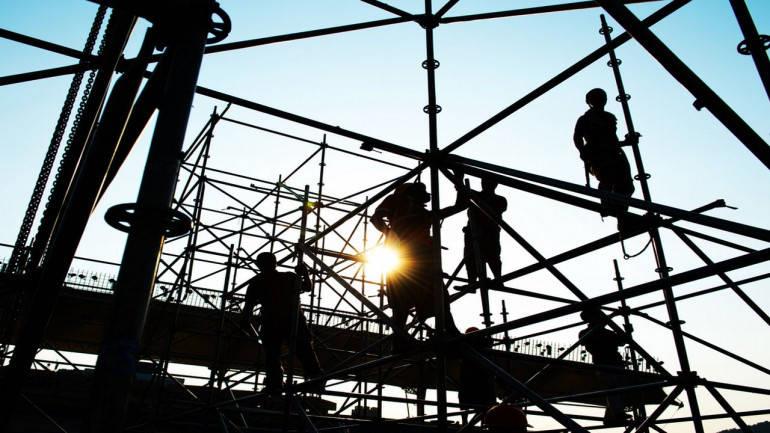News
Here’s why giving infrastructure status to the logistics sector is a great move....
By bringing logistics at par with roads in term of its status, the government has provided the necessary platform for development. It remains to be seen if the private sector bites the bullet and participates in the development of a logistical backbone..
In a study conducted by the government titled Assessment of Quantitative Harvest and Post-Harvest Losses of Major Crops and Commodities in India, it was found that the annual value of harvest and post-harvest losses of major agricultural produces at the national level was of the order of Rs 92,651 crore calculated using production data of 2012-13 at 2014 wholesale prices. This is more than the loan waivers announced recently.
Since this study was done, no further updates have been provided by the government. The huge loss is either borne by the farmers who are unable to sell their produce or by the taxpayer as the government is not able to sell the purchased good in time.
The main reason behind the loss is lack of storage and transportation facility in the country. While the government has been working on improving the road network in the industry, storage and warehousing facilities were not being created at the same pace.
With the announcement of giving logistics an infrastructure status, a major part of the issue is being addressed. The government has granted infrastructure status to the logistics sector, including multi-modal logistics parks and cold chains.
Infrastructure status for cold chains and warehousing facilities will provide a big boost to attracting private investment in this sector as the cost of funding it will be at a concessional rate and the players will have multiple instruments to raise the money through. Money can now be availed with a longer tenure, will have easier terms and can be raised from insurance companies, pension funds, and international lenders.
According to industry body Assocham, logistics costs in India are one of the highest, at around 14 percent of GDP. The same in developed countries with better infrastructure is around 6-8 percent of the GDP. An Assocham-Resurgent India joint study states that India can save up to USD 50 billion if logistics cost is brought down from 14 percent to 9 percent.
This saving will make Indian companies more competitive in the international market. Improved speed of delivery products and other logistical benefits will help companies grow faster and sweat their assets.
But more importantly, improved logistical infrastructure will help create jobs. Government is already implementing the dual Bharatmala (road network) and Sagarmala (Waterways network) to improve logistic backbone. Transportation services form a third of the cost of a logistics chain. Improving transportation would require the coordinated development of railways, roads, and waterways. Roads carry about 60 percent of the freight cargo in India.
Added to these is the rapid expansion of railways network. The Dedicated Freight Corridors (DFC) will increase the speed of transportation through railways which compete with roads for the same freight. A container train from Delhi to Mumbai traveling on DFC can cover the distance in 24 hours. A truck would take a minimum of three days. National highways constitute just two percent of the country’s road network but carry 40 percent of the traffic load; thus a better rail network will help reduce road congestion.
Along this network, the government has planned to set up 34 mega logistics parks at investments of more than Rs 1 lakh crore. The Centre will take up projects in partnership with state governments and private companies. The government expects the Indian logistics sector to grow to USD 360 billion by 2032 from the current USD 115 billion.
The biggest advantage will be higher job opportunities. According to the government, Bharatmala and the related network will result in the creation of 2 crore jobs. The Bharatmala programme will link border and international connectivity roads, develop economic corridors, inter corridors and feeder routes, improve connectivity of national corridors, build coastal and port connectivity roads, and greenfield expressways.
The Sagarmala programme, on the other hand, intends to capitalise on the navigational potential of India’s 7,500 km long coastline and over 14,000 km of inland waterways by declaring 111 waterways as National Waterways. Sagarmala will develop ports as engines of growth with the idea of industrializing the port areas by developing 14 coastal economic zones. It is expected that besides saving Rs 35,000-Rs 40,000 crore as logistics cost annually, boosting exports by about USD 110 billion and generating one crore new jobs, Sagarmala will also double the share of domestic waterways in the modal mix in the next ten years.
Roads, rails and waterways without the supporting storage and warehousing infrastructure will not have the same impact as one with the infrastructure in place.
By bringing logistics at par with roads in term of its status, the government has provided the necessary platform for development. It remains to be seen if the private sector bites the bullet and participates in the development of a logistical backbone. If they do, the multiplier effect of a strong logistics support structure can be huge.
http://www.moneycontrol.com/news/business/economy/heres-why-giving-infrastructure-status-to-the-logistics-sector-is-a-great-move-2443943.html
